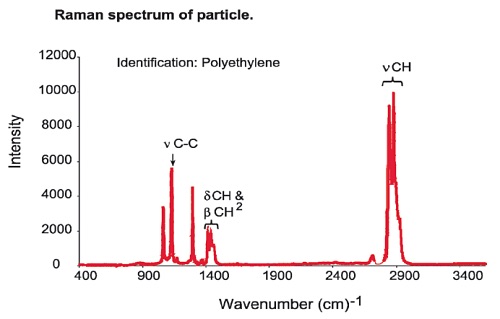Identifying Contaminants Using Raman Spectroscopy: Organic Particles
Home » Identifying Contaminants Using Raman Spectroscopy: Organic Particles
Learning the chemical composition of contaminants is important in order to determine the source of contamination. For organic particles, specific identification of the type of material is essential because there are often many possible sources present in the system.
Small organic particles (i.e., those less than 5µm) pose particularly difficult problems because most techniques used for organic analysis cannot effectively identify samples this small. Raman spectroscopy is often the best approach to this type of problem.
In this example, a particle that was approximately 1 µm in diameter was found on a surface. Raman analysis of the sample indicated that is was composed of polyethylene.
The spectrum obtained from the particle matched a reference spectrum of polyethylene. The high spacial resolution of Raman Spectroscopy makes it ideal to investigate particles in the 1µm size range. It is especially useful in combination with SEM-EDS to determine the elemental species present.
Would you like to learn more about Identifying Contaminants Using Raman?
Contact us today for your identifying contaminants using Raman Spectroscopy. Please complete the form below to have an EAG expert contact you.
